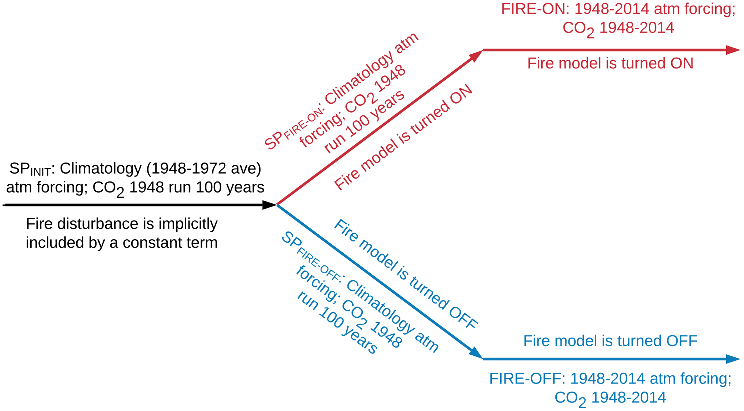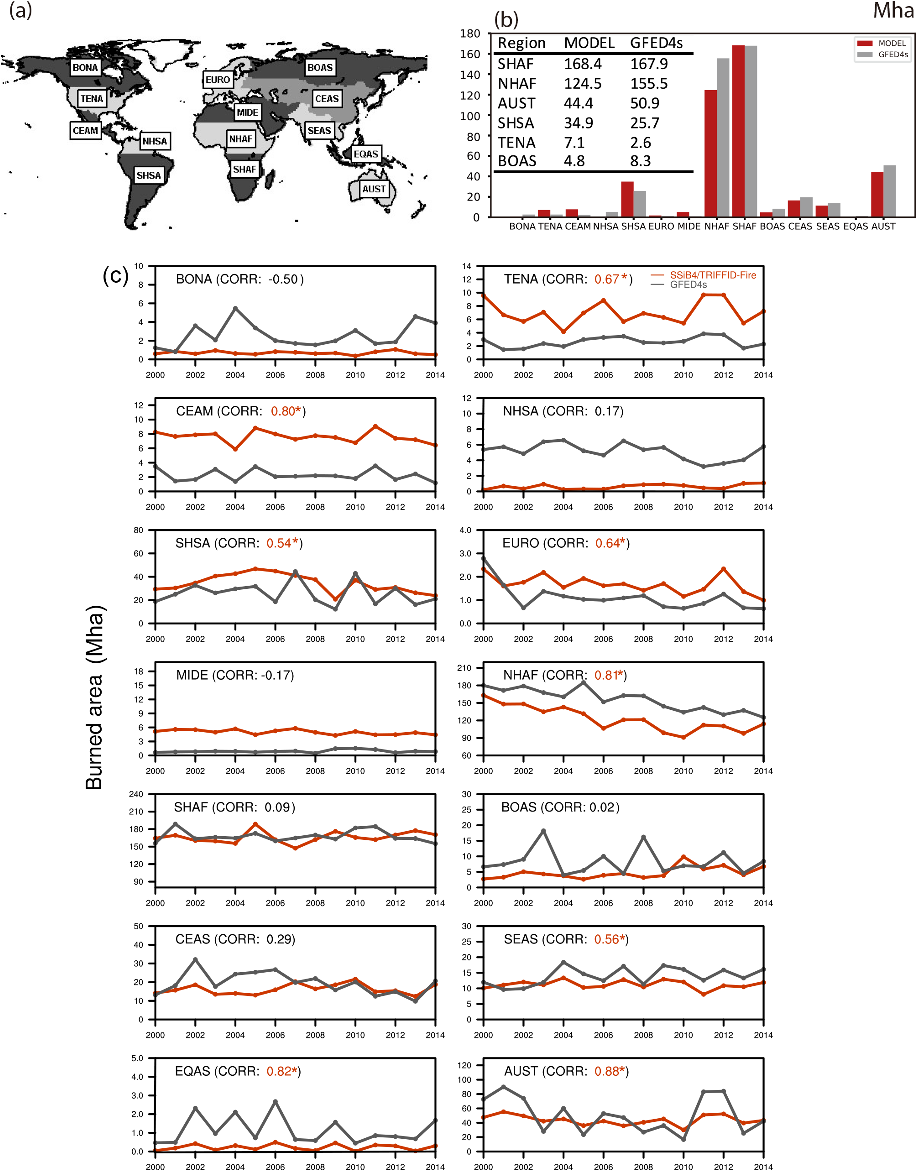




Did you find this useful? Give us your feedback


















948 citations
21 citations
17 citations
12 citations
6 citations
12 citations
12 citations
6 citations
4 citations
It reasonably reproduces the global GPP and PFT distribution, which is important to study fire effects on the ecosystem. The SSiB4/TRIFFID-Fire is then applied to study the long-term fire effects on ecosystem characteristics and surface energy. HH conducted the simulation with suggestions from FL and YL.
Other sources of uncertainties include the differences in the partitioning between latent heat and sensible heat fluxes in land surface models, the differences in the parameterization of the evaporation processes, and the changes due to atmospheric feedbacks, such as cloud cover and precipitation changes.
Over the African and South American savanna, the authors find fire has reduced the area-averaged LAI and vegetation height by 0.52 m2 m−2 (12.5 %) and 5.76 m (49.1 %), respectively.
Some fire models have been used to assess long-term fire impact on the terrestrial carbon cycle by comparing a reference simulation with fire and a sensitivity simulation representing “a world without fire”.
In TRIFFID (Cox, 2001), the fractional change of the j th PFT ( dfjdt ) is governed by the Lotka–Volterra equation:dfj dt = λjNPPj fj Cvj[ 1− ∑ j cijfj ] − γjfj , (16)where fj is the fractional coverage of the j th PFT; λjNPPj is the carbon available for spreading;
The inaccurate simulation of fire season in several fire regions could come from deficiency of the forcing data, the inaccuracy in dynamic vegetation processes, or some processes that control the fire but are not represented in the model.
When the fire model is coupled to SSiB4/TRIFFID, the loss of PFT fraction due to fires (βj ) can be explicitly derived from the fire-induced carbon loss:βj = (ϕj +ψj ) · fjCvj , (17)where ϕj and ψj are PFT-dependent carbon loss due to combustion and post-fire mortality, respectively.
The average spread area of a fire is assumed to be elliptical in shape, with the ignition point located at one of the foci and the fastest spread occurring along the major axis.
In the Li et al. (2012) fire scheme, this factor (fθ ) is parameterized using root zone soil moisture potential factor β (0–1.0), a model-dependent variable used to calculate transpiration in CLM (Li and Lawrence, 2017).
Cvj is the carbon density (g C km−2); cij is the competition coefficient between the ith and j th PFTs; and γj (s−1) is the constant disturbance representing the loss of PFT fraction due to fires, pests, windthrow, and many other processes.
(13)Cj = (Cleaf,Cstem,Croot,Clitter)j is carbon density vector (g C km−2) for leaf, stem, root, and litter of the j th PFT calculated in TRIFFID.
The burned area in African savanna accounts for more than 60 % of the global burned area in both GFED4s and SSiB4/TRIFFID-Fire (Fig. 4b).
Fire models have been used to reconstruct fire history before the satellite era (Yang et al., 2015; van Marle et al., 2017; Li et al., 2019).
In SSiB4/TRIFFID-Fire, the root zone soil moisture θ is found to be the best variable to describe the dependence of fuel combustibility on the preceding climate.
Their results are consistent with the long-term fire experiments that reported that fire strongly affected vegetation structure, lowering the proportions of trees to fire-resistant grasses and reducing the vegetation height and aboveground biomass (Shackleton and Scholes, 2000; Higgins et al., 2007; van Wilgen et al., 2007; Furley et al., 2008; Smit et al., 2010; Devine et al., 2015), and that fire impact is more significant in wetter savanna than in drier savanna (Moreira, 2000; Sankaran et al., 2005).
In general, the spatial distribution of carbon emissions coincides with that of the burned area: SHAF, NHAF, and SHSA are the major fire emission regions and they contribute to 65.4 % of the total emission in both GFED4s and SSiB4/TRIFFID-Fire (Fig. 8a).